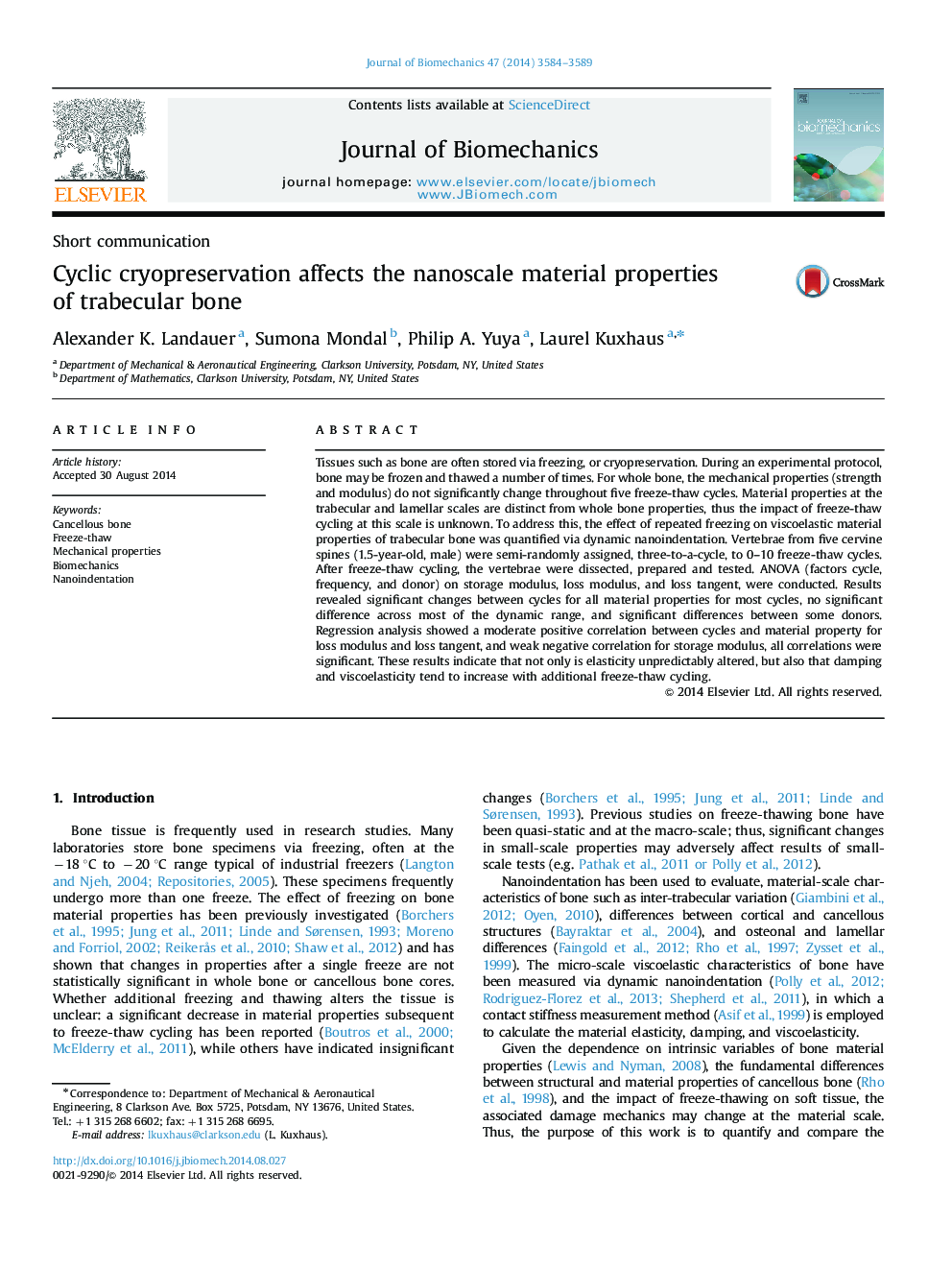| Article ID | Journal | Published Year | Pages | File Type |
|---|---|---|---|---|
| 872072 | Journal of Biomechanics | 2014 | 6 Pages |
Tissues such as bone are often stored via freezing, or cryopreservation. During an experimental protocol, bone may be frozen and thawed a number of times. For whole bone, the mechanical properties (strength and modulus) do not significantly change throughout five freeze-thaw cycles. Material properties at the trabecular and lamellar scales are distinct from whole bone properties, thus the impact of freeze-thaw cycling at this scale is unknown. To address this, the effect of repeated freezing on viscoelastic material properties of trabecular bone was quantified via dynamic nanoindentation. Vertebrae from five cervine spines (1.5-year-old, male) were semi-randomly assigned, three-to-a-cycle, to 0–10 freeze-thaw cycles. After freeze-thaw cycling, the vertebrae were dissected, prepared and tested. ANOVA (factors cycle, frequency, and donor) on storage modulus, loss modulus, and loss tangent, were conducted. Results revealed significant changes between cycles for all material properties for most cycles, no significant difference across most of the dynamic range, and significant differences between some donors. Regression analysis showed a moderate positive correlation between cycles and material property for loss modulus and loss tangent, and weak negative correlation for storage modulus, all correlations were significant. These results indicate that not only is elasticity unpredictably altered, but also that damping and viscoelasticity tend to increase with additional freeze-thaw cycling.
